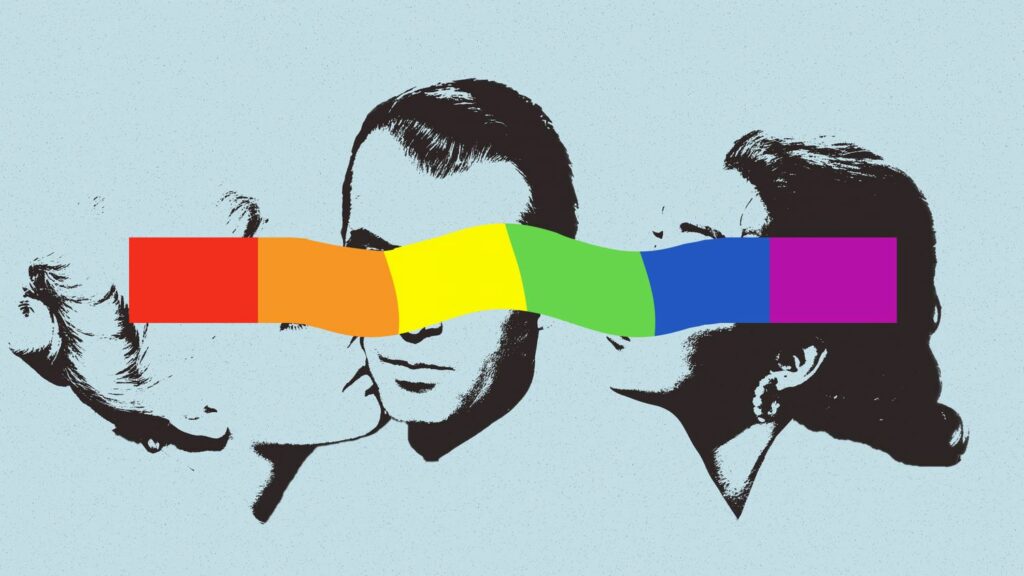Sexual orientation is a complex and diverse aspect of human identity, encompassing a wide range of experiences and preferences. While society often categorizes people into distinct boxes of sexual orientation, there exists a diverse spectrum that defies rigid definitions. In this article, we will explore the concept of gray sexuality, its place within the spectrum of sexual orientation, the challenges faced by graysexual individuals, and the importance of understanding and supporting this identity.
Contents
Understanding Sexual Orientation and Graysexuality

Sexual orientation refers to an individual’s emotional, romantic, and sexual attraction to others. Traditionally, sexual orientations have been categorized as heterosexual, homosexual, and bisexual, with each category representing attraction to different genders. However, the understanding of sexual orientation has evolved over time, acknowledging that it exists on a spectrum rather than being confined to strict categories.
Graysexuality, also known as gray-ace or gray-asexuality, is a term used to describe individuals who identify as experiencing limited or infrequent sexual attraction. Graysexual individuals may experience occasional moments of sexual attraction, but it is often less intense or less frequent compared to the experiences of individuals with other sexual orientations.
Graysexuality and the Spectrum of Sexual Orientation
Graysexuality is a term used to describe individuals who experience limited or infrequent sexual attraction or a diminished interest in sexual activity. It falls within the spectrum of sexual orientation and is considered a part of asexuality. People who identify as graysexual may experience sexual attraction but to a lesser extent or under specific circumstances.
The concept of the spectrum of sexual orientation recognizes that sexual orientation exists on a continuum rather than being limited to rigid categories. It acknowledges that individuals can experience various levels of attraction and may not fit neatly into traditional labels such as heterosexual, homosexual, or bisexual.
The spectrum of sexual orientation encompasses a wide range of identities, including but not limited to:
- Heterosexuality: Attraction primarily to individuals of the opposite gender.
- Homosexuality: Attraction primarily to individuals of the same gender.
- Bisexuality: Attraction to individuals of both the same and opposite genders.
- Pansexuality: Attraction to individuals regardless of their gender identity.
- Asexuality: A lack of sexual attraction or interest in sexual activity.
- Graysexuality: Experiencing limited or infrequent sexual attraction.
Demystifying Graysexuality
Graysexual individuals often experience a sense of confusion and self-discovery as they navigate their sexual orientation. They may question their attractions and experiences, seeking to understand themselves better. The graysexual identity provides a framework for these individuals to acknowledge and validate their unique experiences.
Graysexuality is often interconnected with asexuality, another sexual orientation on the spectrum. While asexual individuals do not experience sexual attraction, graysexual individuals may have sporadic or weaker attractions. Understanding the differences and commonalities between gray sexuality and asexuality can help to dispel misconceptions and foster inclusivity.
Navigating relationships as a graysexual individual can present unique challenges, but with open communication and understanding, fulfilling and satisfying relationships are possible. Here are some suggestions to consider:
- Self-awareness and self-acceptance: Take the time to understand and accept your own sexual orientation. Recognize that being graysexual is a valid part of who you are, and it’s okay to have different levels of sexual attraction than others.
- Open communication: It is crucial to communicate openly and honestly with your partner about your sexual orientation and what it means for your relationship. Discuss your feelings, desires, and boundaries, ensuring that both partners have a clear understanding of each other’s expectations.
- Educate your partner: Help your partner understand what gray sexuality means to you. Explain that it is not a reflection of their desirability but rather a unique aspect of their sexual orientation. Encourage open dialogue and address any questions or concerns they may have.
- Define intimacy: Explore and define what intimacy means to you and your partner beyond sexual attraction. Emotional, intellectual, and physical connections can be equally important in a relationship. Discuss alternative ways of expressing love, affection, and closeness that align with both partners’ needs and boundaries.
Challenges and Misconceptions

Certainly, there can be challenges and misconceptions surrounding gray sexuality. Here are some common ones to be aware of:
- Lack of awareness and understanding: Graysexuality is not as widely known or understood as other sexual orientations. Many people may be unfamiliar with the term or have misconceptions about what it means. This lack of awareness can lead to misunderstandings and difficulties in explaining your orientation to others.
- Pressure to conform to societal expectations: Society often places a strong emphasis on sexual attraction and relationships. As a graysexual individual, you may feel pressure to conform to societal norms and engage in sexual activity even if it doesn’t align with your desires or comfort levels. It’s important to prioritize your own needs and boundaries, rather than succumbing to external expectations.
- Feeling misunderstood or invalidated: Graysexual individuals may face challenges in having their orientation acknowledged and validated by others. Some people may struggle to comprehend the concept of limited or infrequent sexual attraction, leading to skepticism or dismissive attitudes. This can be emotionally challenging and may contribute to feelings of isolation or self-doubt.
- Difficulty finding compatible partners: Graysexual individuals may face difficulties in finding partners who understand and respect their orientation. Some individuals may struggle with the concept of a relationship that doesn’t prioritize sexual intimacy, leading to incompatible expectations. It can take time and effort to find someone who appreciates and supports your graysexual identity.
- Internal questioning and self-discovery: Graysexuality is a diverse experience, and individuals may go through a process of self-discovery and self-identification. Some graysexual individuals may question or doubt their own feelings and experiences, especially when they differ from societal expectations. Seeking support from like-minded communities or counseling can be helpful during this process.
Support and Community
Finding support and community is important for graysexual individuals. Here are some avenues to explore:
- Online communities and forums: The internet offers a wealth of online communities where graysexual individuals can connect with others who share similar experiences. Participating in these communities can provide a sense of belonging and support.
- LGBTQ+ organizations: Many LGBTQ+ organizations and community centers provide resources, support groups, and events that encompass various sexual orientations, including gray sexuality. These organizations can offer a safe and inclusive space for graysexual individuals to connect with others, seek guidance, and find support.
- Therapy or counseling: Seeking therapy or counseling can be beneficial for individuals navigating their gray sexuality. A therapist who specializes in LGBTQ+ issues or sexuality can provide a supportive and non-judgmental environment where you can explore your feelings, discuss challenges, and gain valuable insights and coping strategies.
- Social media platforms: Engaging with social media platforms can connect you to communities of graysexual individuals. You can follow hashtags related to gray sexuality, join Facebook groups2, or connect with individuals on platforms like Twitter, Instagram, or Tumblr. It’s important to ensure that the spaces you engage with are supportive and positive.
- Local meetups or events: Check if there are local meetups or events specifically for graysexual or asexual individuals in your area. These gatherings provide an opportunity to meet people face-to-face, share experiences, and build connections.
- Education and awareness events: Attend workshops, conferences, or seminars focused on sexual orientation and gender diversity. These events often include discussions on asexuality and gray sexuality, providing opportunities to learn, connect with others, and find support.
Graysexuality and Identity

Graysexuality is an important aspect of an individual’s sexual orientation and personal identity. Here are some key points to consider regarding gray sexuality and identity:
- Validity of gray sexuality: Gray sexuality is a valid sexual orientation. It represents a diverse range of experiences where individuals may experience limited or infrequent sexual attraction. It is essential to recognize and respect graysexual individuals’ identities and experiences, just as with any other sexual orientation.
- Self-identification: Identifying as graysexual is a personal choice. It is up to each individual to determine how they label or describe their own experiences. Some people may embrace the term “graysexual” as a central part of their identity, while others may use other labels, such as demisexual, or choose not to use any label at all. It’s important to respect individuals’ self-identified labels and the way they choose to express their gray sexuality.
- Fluidity and exploration: Like other sexual orientations, gray sexuality can be fluid and subject to change over time. Some individuals may find that their level of sexual attraction fluctuates or evolves throughout their lives. It is essential to acknowledge and support individuals’ self-discoveries and understand that their graysexual identity may evolve or intersect with other aspects of their identity.
- Intersectionality: Graysexual individuals, like anyone else, have intersecting identities that shape their experiences. Factors such as gender, culture, race, and disability can influence how graysexuality is experienced and understood within different contexts. It’s crucial to consider and respect the unique intersectional experiences of graysexual individuals and the ways in which their identities intersect with other aspects of their lives.
Conclusion
Graysexuality challenges the conventional understanding of sexual orientation, highlighting the fluidity and complexity of human sexuality. By acknowledging and supporting graysexual individuals, we can foster inclusivity and create a society that values the diverse experiences and desires of all individuals.
Life may sometimes be challenging for asexuals, but Online Asexual Counseling can help. Get experienced LGBTQ therapists at PrideMantra: Book a trial LGBTQ therapy session.


